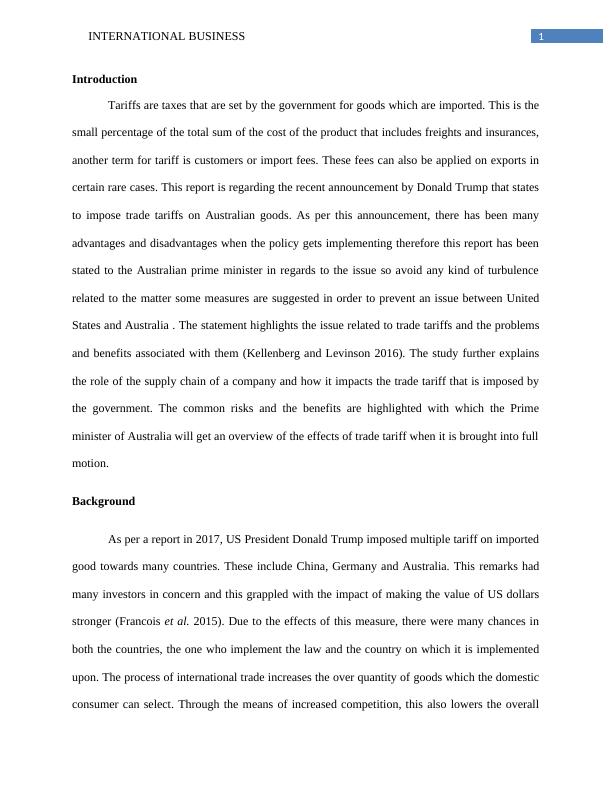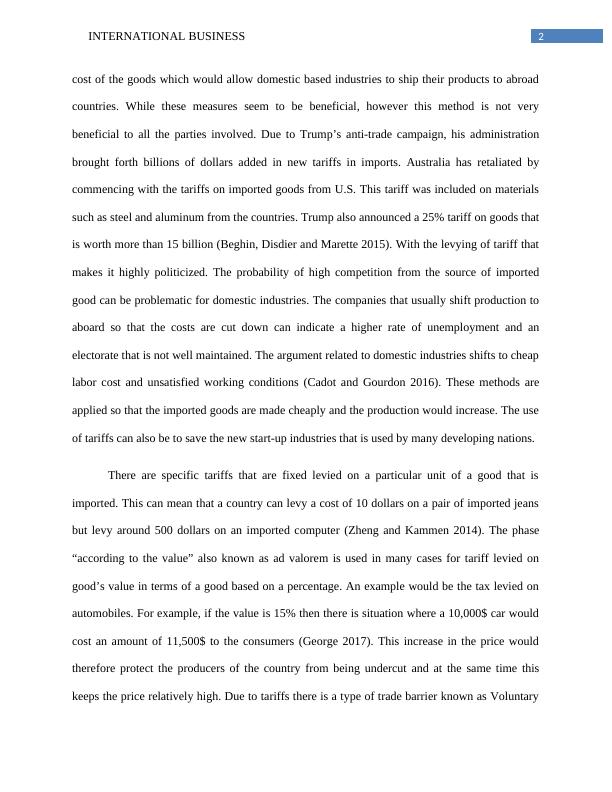Impact of Trade Tariffs on Australian Goods: Advantages and Disadvantages
9 Pages2457 Words72 Views
Added on 2023-06-05
About This Document
This report discusses the impact of trade tariffs on Australian goods and highlights the advantages and disadvantages associated with them. It also explains the role of the supply chain and the common risks and benefits.
Impact of Trade Tariffs on Australian Goods: Advantages and Disadvantages
Added on 2023-06-05
ShareRelated Documents
End of preview
Want to access all the pages? Upload your documents or become a member.
Trade Restrictions on Australian Economy
|5
|1242
|25
Implications of Trump Tariffs on Australian Economy
|10
|1521
|429
Trump's Nationalistic Philosophy
|5
|771
|441
Trade Protectionism and Its Effects on the US Economy
|6
|1113
|305
The US And China Trade War
|10
|3940
|17
Impact of US-China Trade War on Australian Economy
|7
|1394
|54



